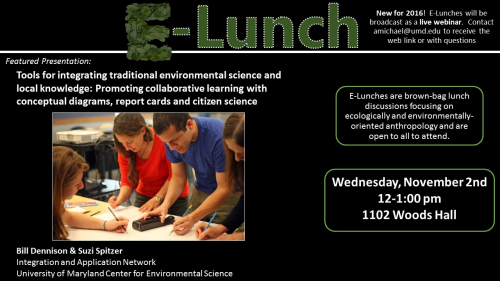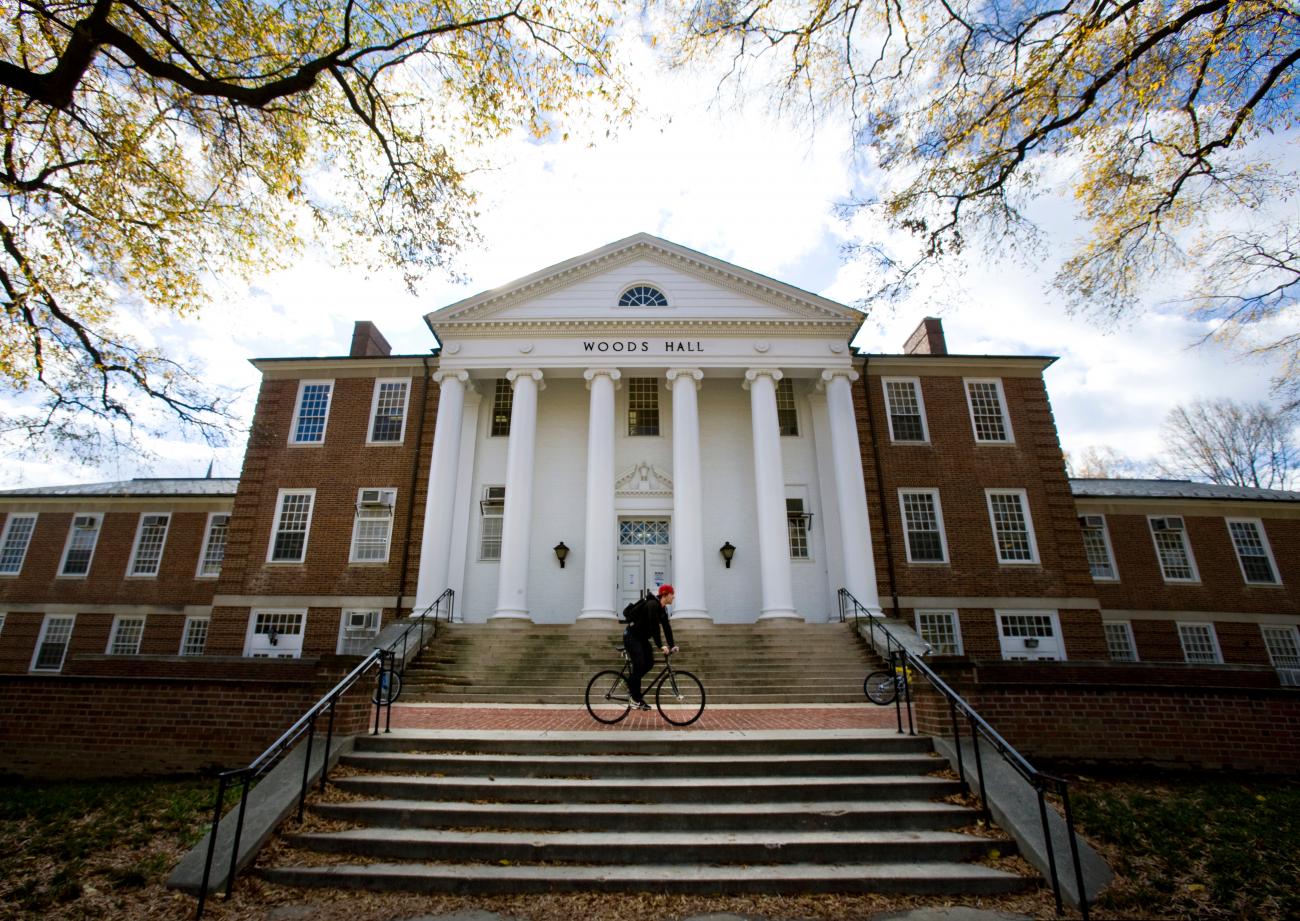This month’s E-Lunch features a presentation by Bill Dennison and Suzi Spitzer (Integration and Application Network, University of Maryland Center for Environmental Science), entitled “Tools for integrating traditional environmental science and local knowledge: Promoting collaborative learning with conceptual diagrams, report cards and citizen science”. Join for the presentation and discussion to follow! (See below for the presentation abstract.)

Tools for integrating traditional environmental science and local knowledge: Promoting collaborative learning with conceptual diagrams, report cards and citizen science
Bill Dennison and Suzi Spitzer; Integration and Application Network, University of Maryland Center for Environmental Science
Both environmental scientists and members of the public recognize the values of the natural environment, and have expressed awareness and concern for threats to environmental health. But, these groups often do not effectively communicate to develop shared strategies for solving environmental problems, and dialogue between these groups is most often unidirectional, with scientists communicating their research to others. Therefore, a collection of scientists at the Integration and Application Network (IAN) are focusing on solving, not just studying environmental problems, and have developed a set of tools that enhance traditional one-way science communication by integrating scientific information and local knowledge in order to empower positive environmental outcomes. Three of these IAN approaches will be presented: 1) Conceptual diagrams facilitate collaboration and dialogue between diverse stakeholders by using a global symbol language to visually capture key values and major threats of particular ecosystems. 2) Report cards can synthesize environmental and socio-economic data into comprehensive grades that allow the public to broadly assess ecosystem health within a socio-political context and directly compare health across geographic regions. These grades and can incentivize political leaders and residents to initiate actions that improve future grades for their respective regions. 3) Citizen science is a way to increase public participation in the creation and use of scientific knowledge, allowing scientists and members of the public to collaborate in order to address specific environmental problems. Collectively, these tools are propelling the IAN team to promote collaborative learning with a diversity of stakeholders, and empower people to become active environmental stewards and celebrate their contributions and achievements.



